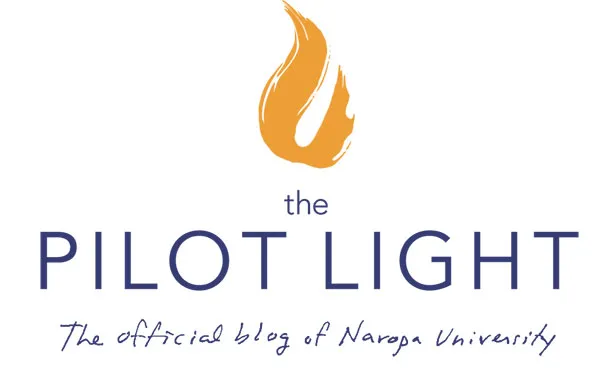This post is a part of “The Soft Spot,” a section of the Naropa University blog dedicated to compassion from Naropa’s Center for the Advancement of Contemplative Education (CACE).
By Jordan Quaglia, PhD, Assistant Professor of Contemplative Psychology at Naropa University
For most of us, the COVID-19 outbreak has already caused a sudden, unwelcome shift in our daily routines. Much of this shift is guided by public health knowledge regarding the exponential power of simple actions to reduce suffering, especially for the most vulnerable people throughout society. Among other things, this includes more frequent handwashing, social distancing, and hunkering down in the privacy of our homes. Informed by scientific data and understanding, public health officials tell us these small acts are truly acts of compassion—in following these guidelines, we may literally save lives.
Since public health experts are already clear about the compassionate nature of these simple acts, it seems opportunistic to contemplate the inner development of compassion alongside these external actions. Put another way, through the lens of compassion training, COVID-19 can be seen as a radical invitation into fostering more compassion, inside and out.
Accordingly, here are three simple practices for adding an internal dimension of compassion to three external actions asked of us because of COVID-19. Through aligning inner and outer expressions of compassion, each practice can help to strengthen our confidence in compassion, supporting further engagement to alleviate suffering in these challenging times.
Compassionate Handwashing. Medical experts tell us that 20 seconds is the recommended amount of time for washing our hands. (By the way, this video provides a helpful guide.) To add an internal dimension of compassion, we can rely on repeating some simple phrases while washing our hands. So long as we don’t rush, repeating the four wishes suggested below takes about 20 seconds, so you can also use them to time your handwashing.
We suggest starting with well-wishing for ourselves and then extending out to others, but you can reverse the order if that feels more natural. When well-wishing for others, feel free to name a specific other you are practicing for, or to focus broadly on the well-being of all others. Whomever you are focused on, the key to this practice is connecting with a sincere feeling of well-wishing with each wish.
“May I be safe,
May I be happy,
May I healthy,
May I have the ease of well-being.
May you be safe,
May you be happy,
May you be healthy
May you have the ease of well-being.”
Compassion at a Distance. Social distancing refers to minimizing social interactions to reduce the possible spread of COVID-19. Public health officials tell us this temporary restriction of our social life has the power to drastically reduce the harm caused by COVID-19, and for a variety of reasons. (By the way, here’s a helpful explanation of the benefits of social distancing.) Fortunately, compassion-based practices need not involve direct contact with others. Instead, we can practice adding compassion to social distancing by well-wishing from afar.
While some readily believe in the power of well-wishing to directly help others, there’s no need to hold this view to appreciate the power of this practice. Instead, we can see our well-wishing quite simply, as something that helps bring our internal experience into greater alignment with the compassionate act of social distancing. Moreover, the good feelings generated from well-wishing can help boost our own immune system, keeping us healthy.
The simplest way to engage this practice is to go outside for a walk. Any time you see another person, however far away, silently repeat the following wishes for them. See if you can really feel each wish, perhaps as a kind of subtle energy field extending out from you to them.
“May you be safe,
May you be happy,
May you be healthy,
May you have the ease of well-being.”
Cultivating Compassion at Home. According to the recommendations of public health experts, avoiding public spaces as much as possible is a critical part of social distancing. This final practice therefore aims to transform our day-to-day experience of “stuck at home” into an opportunity for compassionate transformation. The ideal approach for this practice involves finding a quiet, distraction-free spot at home, where you can either sit upright (or if preferred, lie comfortably) for about 15 minutes.
Begin by bringing attention to your breathing, allowing each breath to invite a more relaxed state of being. After a few minutes of mindful breathing, begin silently well-wishing using the following script, visualizing each person as you wish them well. Below is a suggested sequence of well-wishing we recommend, but feel free to start with whoever feels most natural for you. As always, the exact wording is less important than how the statement makes you feel—ideally, this wish helps you connect with genuine feelings of warmth for yourself and others.
Oneself:
“May I be safe,
May I be happy,
May I healthy,
May I have the ease of well-being.”
A Loved One:
“May you be safe,
May you be happy,
May you be healthy
May you have the ease of well-being.”
A Stranger:
“May you be safe,
May you be happy,
May you be healthy
May you have the ease of well-being.”
All Beings:
“May you be safe,
May you be happy,
May you be healthy
May you have the ease of well-being.”
Interested in Learning More Compassion Practices?
All three of these practices aim to cultivate our wish for the well-being of us and others and are derived from our Naropa Mindful Compassion Training. Starting in April, Naropa University has partnered with Mindful Magazine to launch an online version of our 8-week Mindful Compassion Training, titled WELCOME. If you would like to be updated when the course goes live, please send a simple email with the subject “Online compassion training” to crotterdam@naropa.edu.






